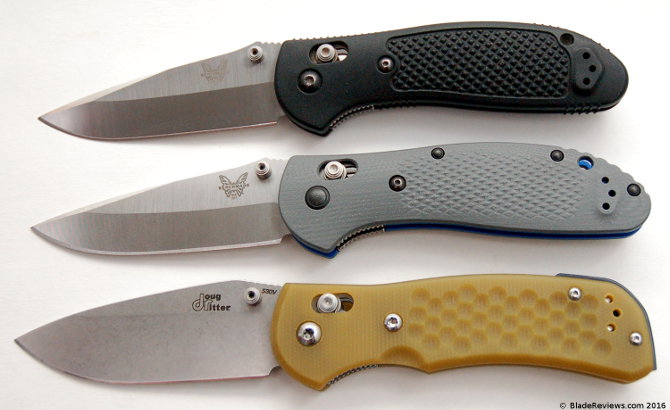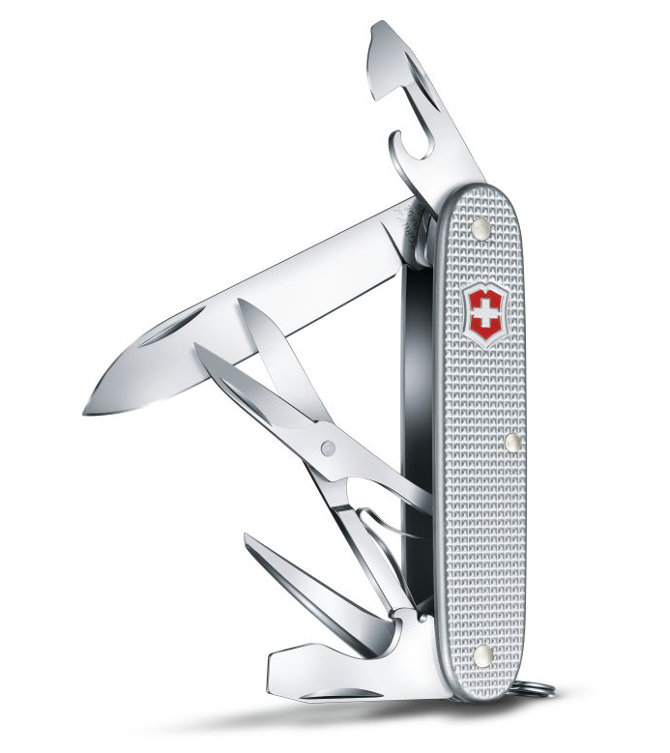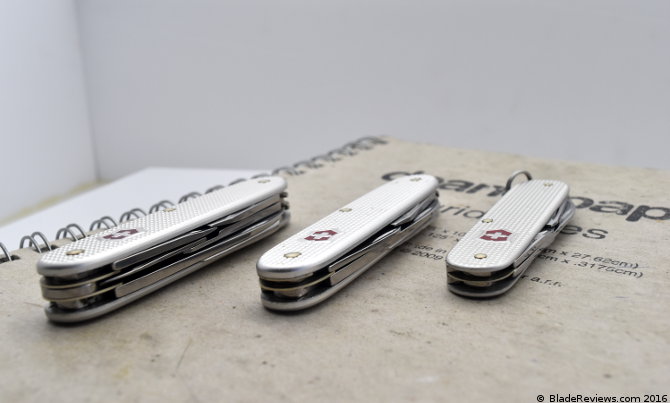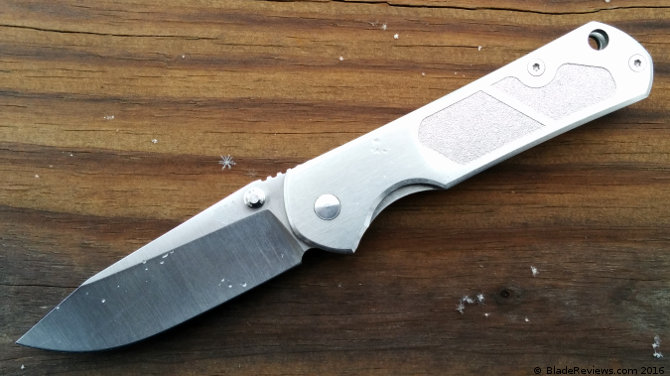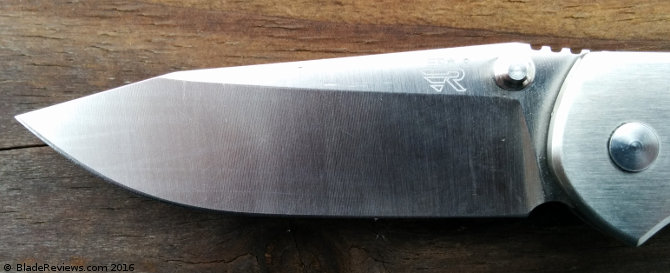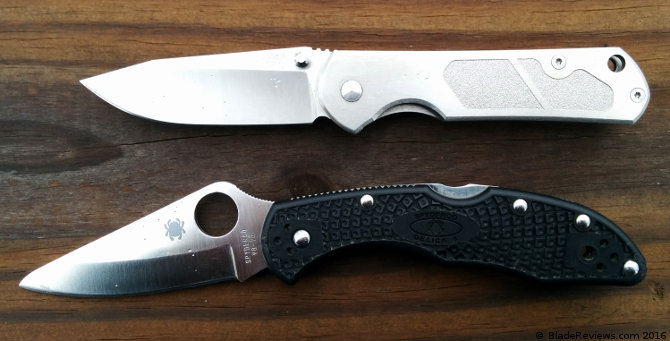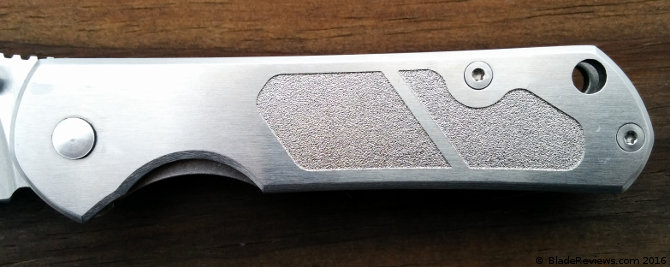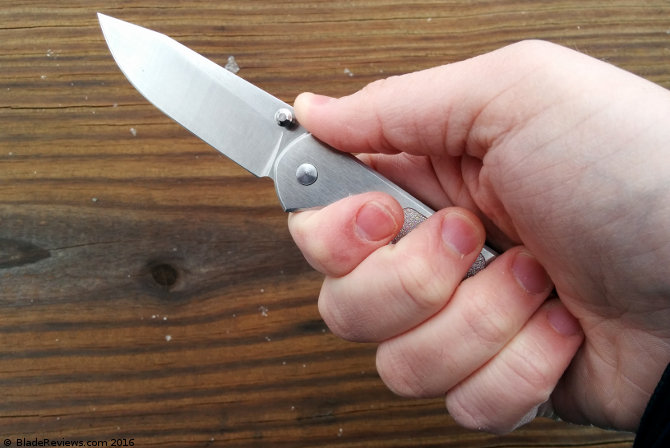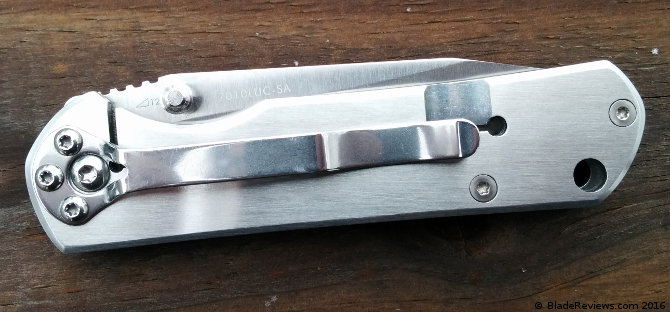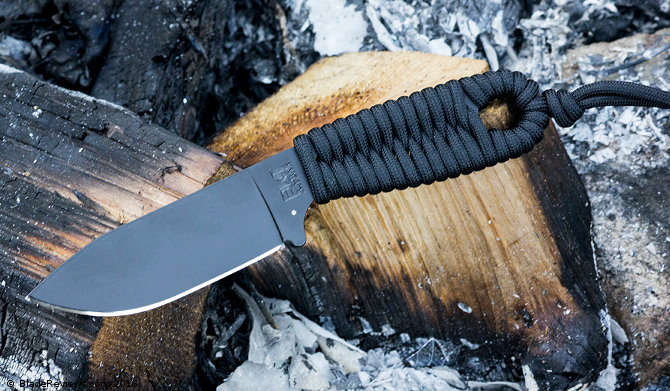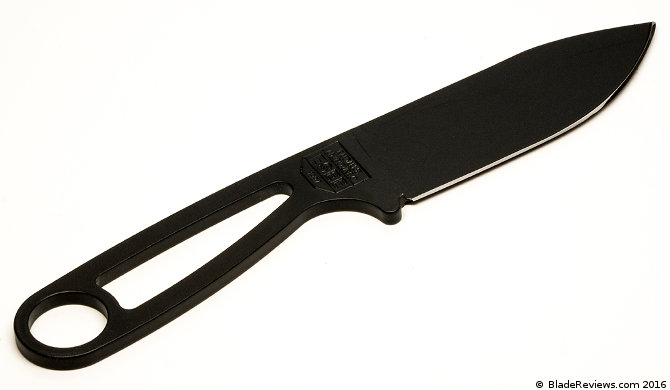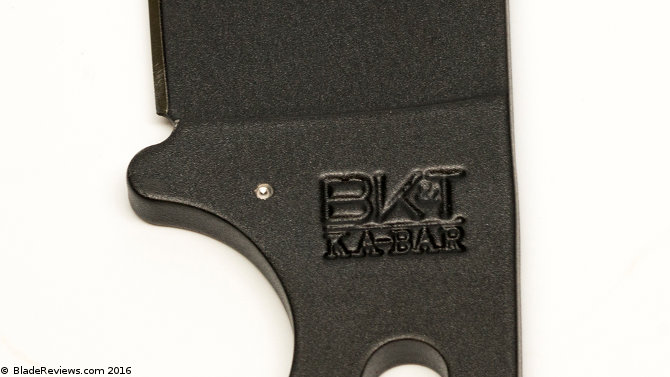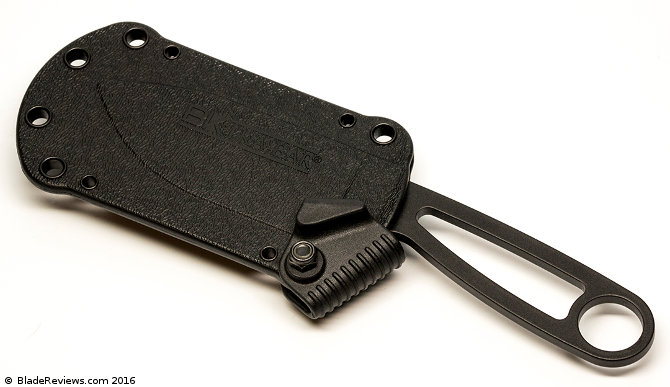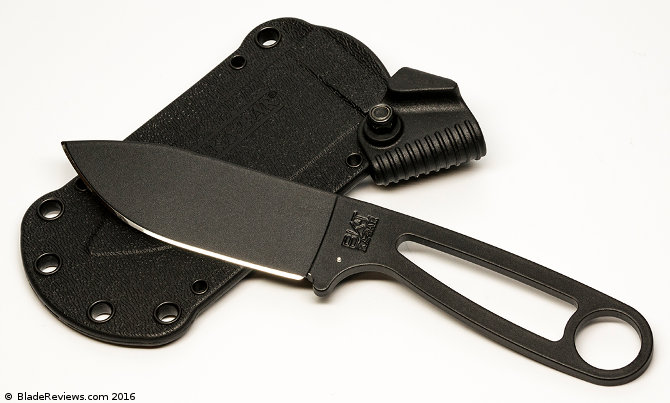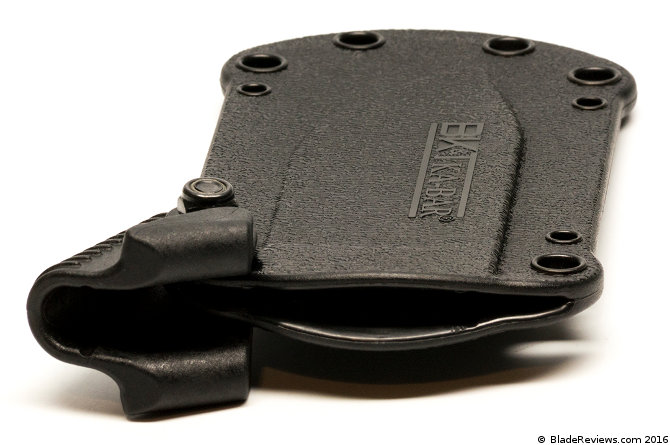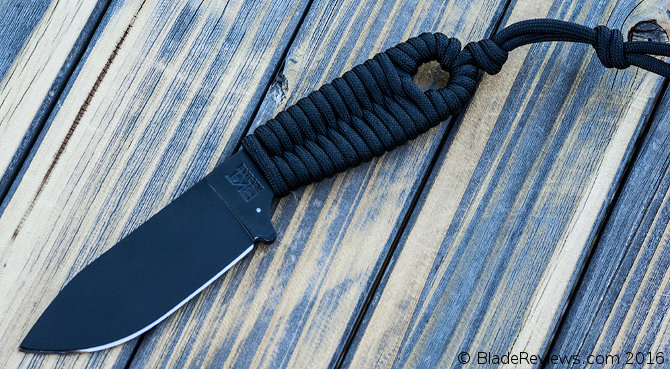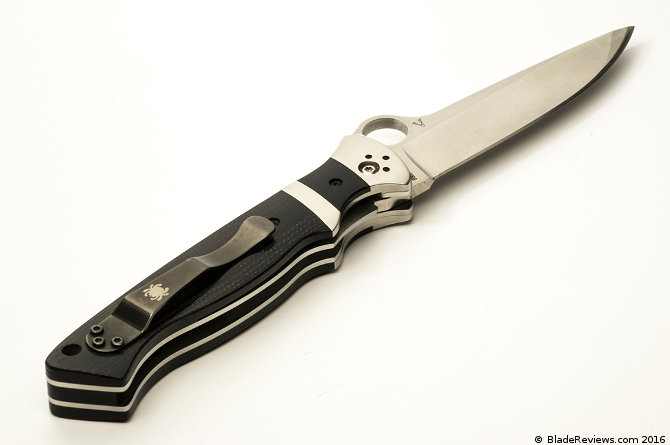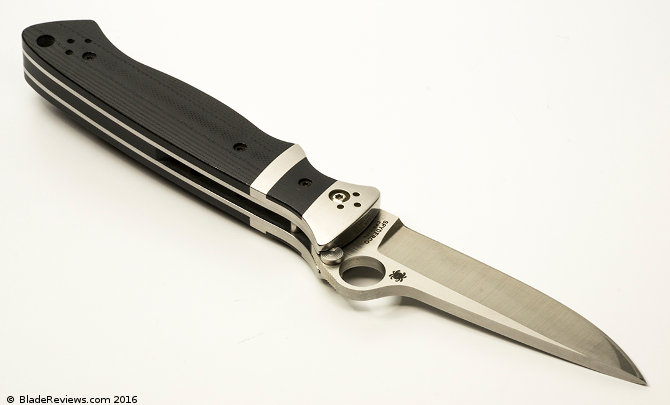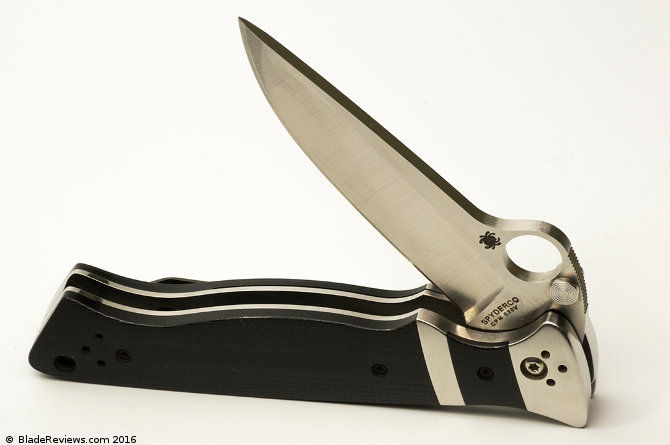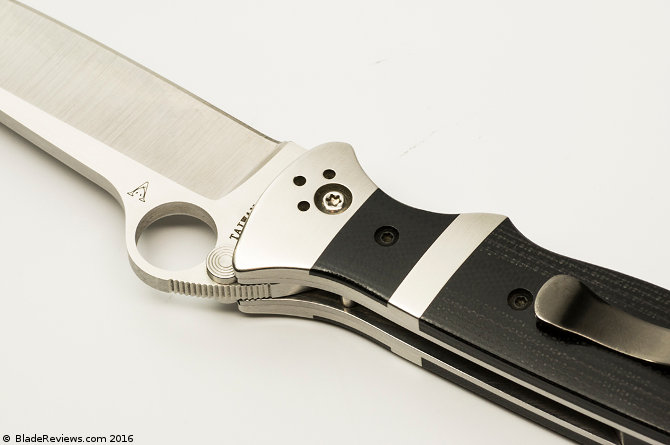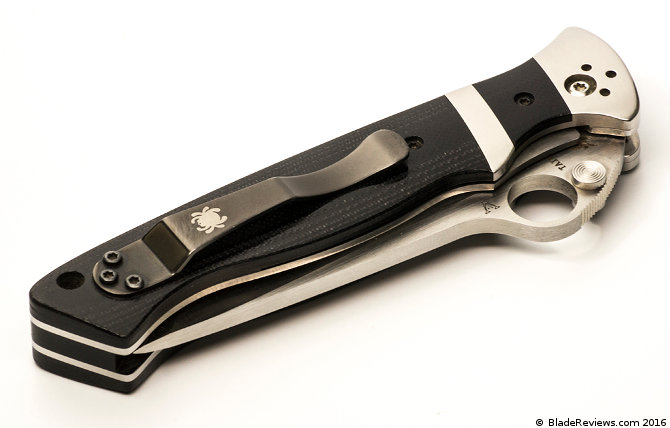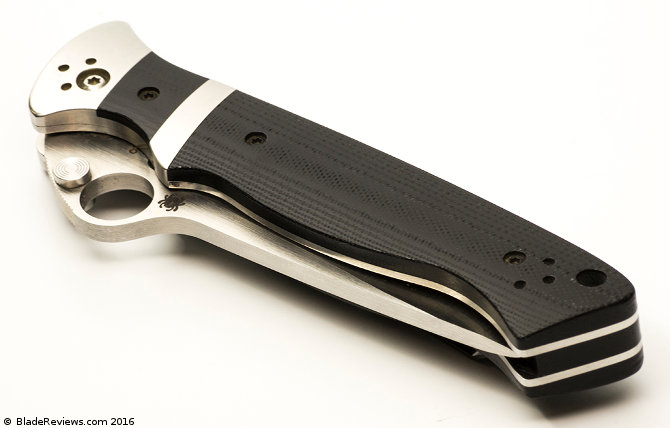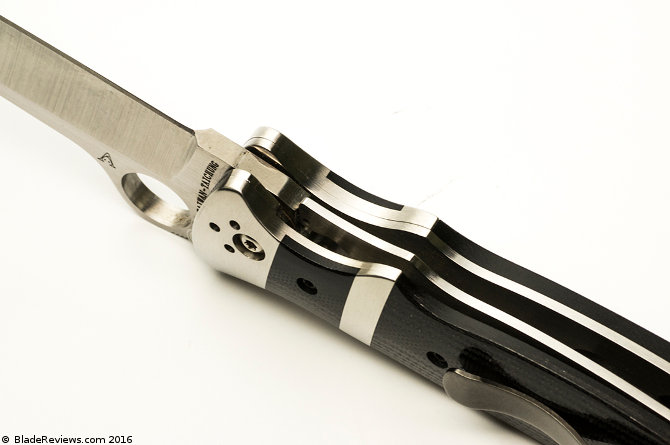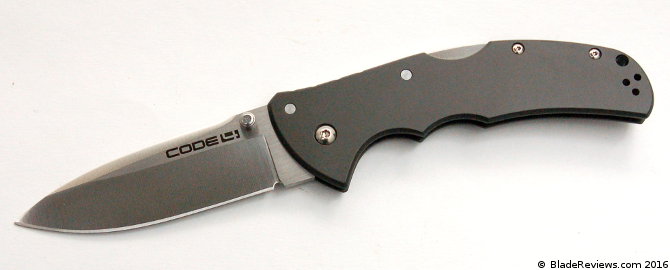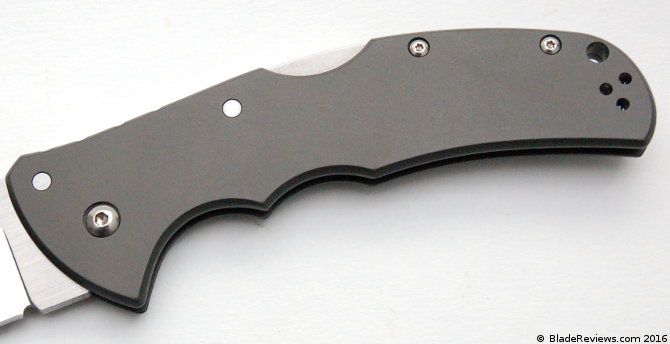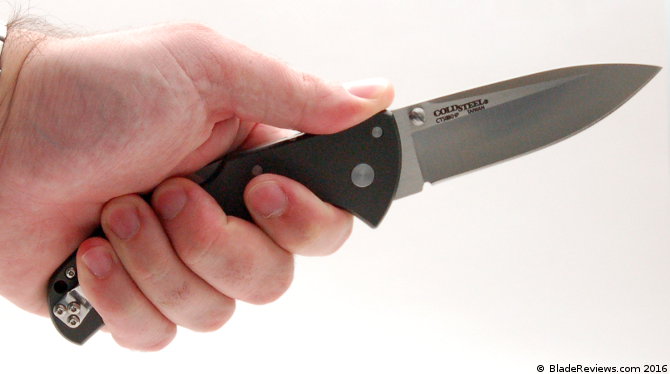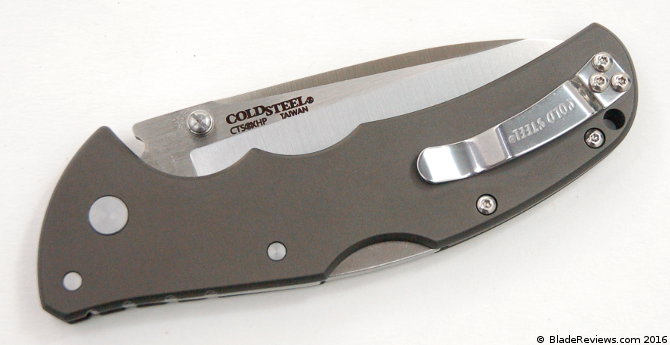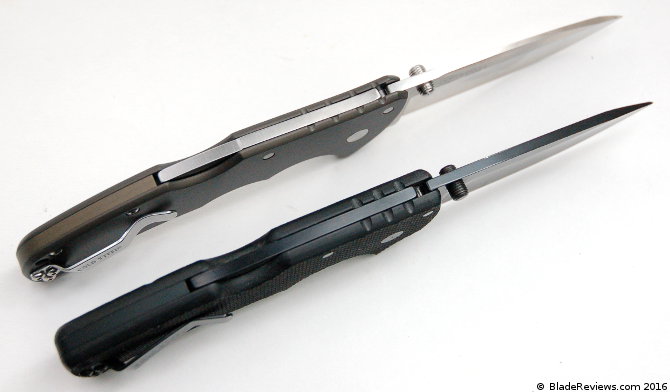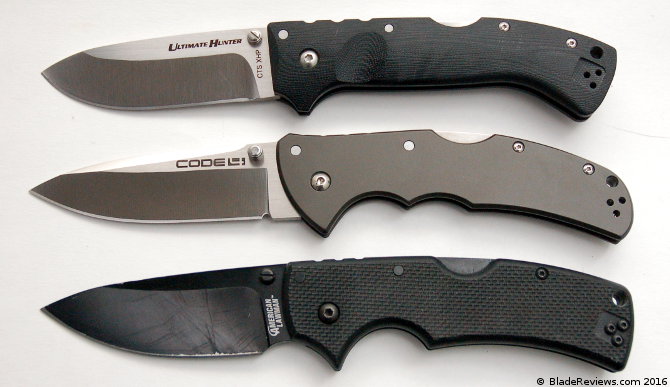I wasn’t one of those guys that had a big issue with the plastic handles on the original Griptilian. I always thought they were light and durable. Maybe not the sexiest choice of materials, but certainly practical. But for many the plastic handles of the Griptilian were a source of contention at best. At worst they were a deal breaker.
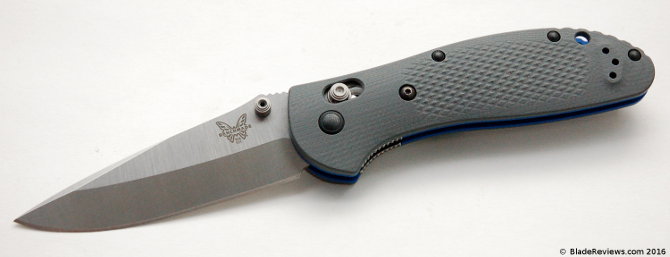
Buy the Benchmade G-10 Griptilian at BladeHQ
So for the longest time if you wanted a Griptilian with G-10 handle scales, you had to go to the after market. This market was pioneered by ex-pat Kevin Wilkins. His line of WilkinsGRIP aftermarket scales were the enthusiast’s best choice if you wanted a G10 Griptilian.
Benchmade finally came around in late 2015 and released both the 551-1 Griptilian and 556-1 Mini Griptilian with G-10 handles. This is arguably the most exciting thing Benchmade has done since the 940-1 Osborne.
This knife was provided to me free of charge by the fine folks over at KnifeArt. In no way has this impacted my impressions of the 551-1. I think the people over at KnifeArt are good guys, I think they run a quality website, and I appreciate their letting me check out this 551-1. Now on to the review.
General Dimensions and Blade Details
The 551-1 has an overall length of 8.07″, a 3.45″ blade, weighs 4.17 ounces and is made in the USA. The G10 version is almost an ounce heavier than the original Griptilian, but it does not feel heavy for it’s size, and seems significantly lighter than my WilkinsGRIP equipped BM 552 / Ritter Griptilian.
The 551-1 has an identical drop point blade to the original Griptilian and is offered with your choice of thumb stud or thumb oval. I always preferred the look of the thumb stud version of the Griptilian, so that is what I got.
When I compare this blade to my original Griptilian the only difference I can detect is that the blade has been given a bit of a stonewash. Of course, the 551-1 features a new blade steel, and I will talk about that below. But beyond that you have the same excellent blade shape of the original Griptilian, with a saber flat grind, and swedge. This classic drop point shape has served me well for many years now.
Besides the switch to G-10 scales, the biggest news about the 551-1 is change to CPM-20CV blade steel. This is a steel that I was previously unfamiliar with. Manufactured by Crucible Industries, CPM-20CV is advertised as a steel with high corrosion resistance and wear resistance, and good toughness. Chemically it is similar to M390, which is an excellent steel. CPM-20CV has an extremely high chromium content, which results in its corrosion resistant qualities. From what I can gather, this appears to be a good choice for a folding knife. It may not have the toughness of a steel like 3V, but I think the extra corrosion resistance is a nice trade off here. My regular 154CM Griptilian has been through the ringer, and it occasionally shows small spots of rust if I forget to clean it.
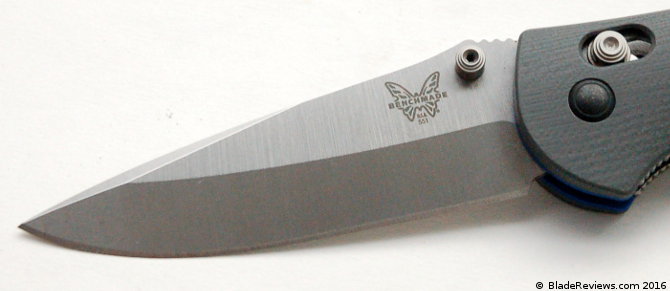
My 551-1 came razor sharp from the factory, and this 20CV seems to hold an edge well. So far I have used the knife to break down a few boxes, open mail, etc. I haven’t wailed on this knife like my original Griptilian and so far have only needed to gently strop the knife to maintain its edge. No corrosion or complaints thus far, but I am not 100% convinced that this steel is worth the price premium over regular 154CM to me.
Still, it’s an interesting steel and I intend to keep this knife for long term testing and evaluation. I’ll update this review as I “gather more data points” and use the knife in the coming years. So far so good.
Handle, Ergonomics, and Pocket Clip
Obviously the handle is the main event here for the 551-1, and is basically the entire point of this knife. I am pleased to say that this new G10 handle has been beautifully executed. It is fully 3-D machined, and features bright blue liners and anodized blue backspacers beneath gray overlays. I am not sure if the gray-blue combo would have been my first choice, but the blue certainly “pops” here and my handle has been flawlessly executed. I am hoping Benchmade will roll out some other color combos in the future.
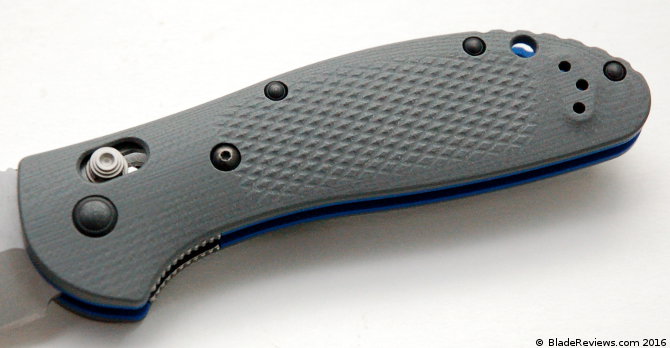
Like the original Griptilian the 551-1 features partial nested steel liners. That is about the only similarity with the handle construction of the original Griptilian. Even the hardware has been upgraded on the 551-1. This new handle is a totally different animal and it transforms the look and feel of the knife.
My favorite aspect of the new handle is how they shaped it to match the contours of the original Griptilian. If you handle aftermarket scales for a Griptilian, they are usually very big and boxy. These aftermarket handles change the ergonomics substantially and add additional weight. That is not the case for the 551-1. Here you get a feel in hand that is very faithful to the original FRN Grip. Of course there is a little extra weight, and the G-10 does feel slightly different, but the overall profile and hand filling nature of the original model has not been lost in translation. Benchmade did away with some of the extra texturing on the handle, and the diamond pattern here isn’t quite as grippy as on the original knife, but there is plenty of grip here for me and I’d go so far as to say that this is an improvement over the original knife from an ergonomics perspective.
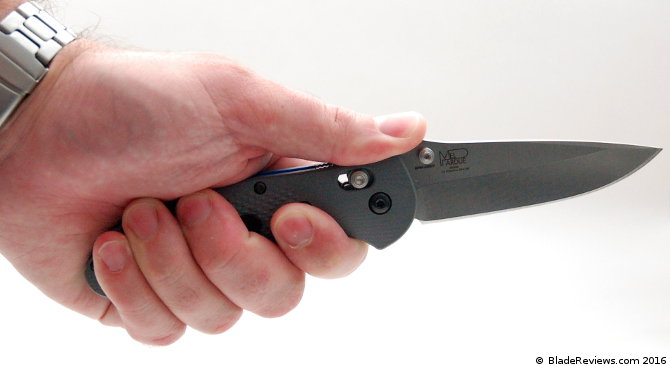
Benchmade decided to include a deep carry pocket clip on the new 551-1 rather than their original spoon clip. I like this deep carry clip. It makes for a discrete knife that I have actually worn with slacks at work a few times now. This is a proven clip design. I think the 551-1 carries well for what it is. This is a larger knife, and it is heavier than it’s FRN predecessor, but this is still something that normal guys can carry and use and I think this is a viable EDC option (although admittedly the mini-551-1 is really all you will need for 99% of your EDC tasks).
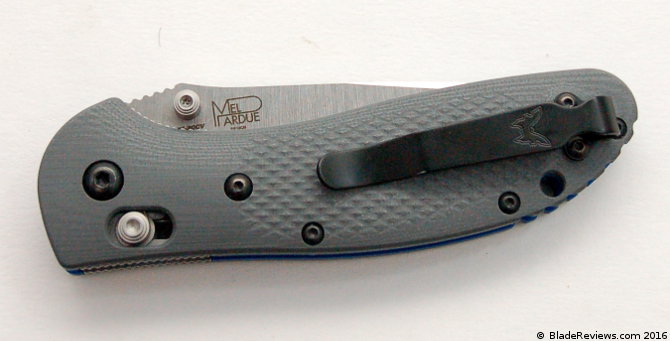
Deployment and Lockup
Benchmade has equipped the 551-1 with an impressively beefy set of phosphor bronze washers. Because you have an open back design, the washers are very prominent on this knife. The blade flicks open effortlessly. This is a satisfying knife to open and close. Whether you decide on the thumb stud version or the thumb hole version I don’t think you will have a problem accessing the blade.
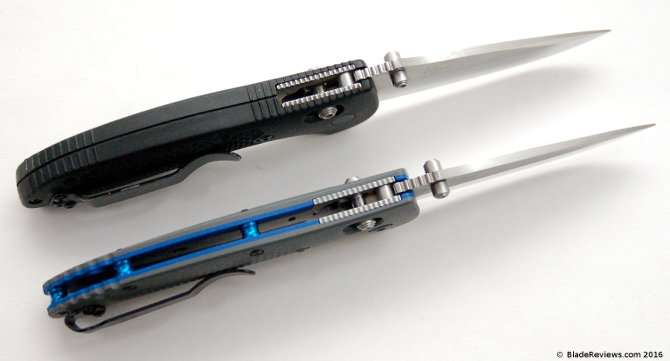
Of course for lock up you have an axis lock here. I have discussed the axis lock for years now. It remains one of my favorite locks as it is fully ambidextrous and allows you to easily open and close the knife with one hand. I find that the use of G10 handle scales adds a lot of structural rigidity to an axis lock knife and the 551-1 is no exception. It feels solid, and may inspire more confidence in the end user than FRN.
Blade centering is perfect on my knife, as I would expect from a nearly $200 folder.
Benchmade 551-1 Review – Final Thoughts
I must admit I was somewhat skeptical about this knife given the enormous price premium over the regular FRN verion, but the 551-1 has been beautifully executed, and I can see where the extra money went. They didn’t just slap some G10 on this thing and call it a day – every single facet of the original Griptilian has been re-considered and in someway upgraded. It’s clear Benchmade spent a lot of time and effort to dial in the 551-1.
Compared to its FRN predecessor, this new 551-1 is simply a superior tool. If the original FRN scales drove you up the wall, then the 551-1 cures that ill handily, and if you are a Griptilian fan I’d say this is basically a “must buy”. I was skeptical at first, especially given the price point, but the 551-1 has exceeded my expectations.
- HIGH-QUALITY: The CPM-S30V stainless steel blade is extremely well-balanced, offering superb edge qualities and rust resistance. The glass-filled nylon handle is tough yet attractive, making it ideal for hard jobs and everyday carry.
- WELL-DESIGNED: Benchmade's AXIS lock is exceptionally strong and fully ambidextrous. The Griptilian 551 is a manual knife that can be opened and closed single-handedly.
- COMFORTABLE: The 551's lightweight design and handle grips make it comfortable to hold and use. The reversible pocket clip offers ultimate accessibility.
- VERSATILE: The Griptilian 551's drop-point utility blade style and all-around functionality make it ideal for everyday use, outdoor activities and even tactical applications.
I recommend buying the 551-1 at Amazon, or BladeHQ, KnifeArt.com. Please consider that buying anything through any of the links on this website helps support BladeReviews.com, and keeps the site going. As always, any and all support is greatly appreciated. Thank you very much.
